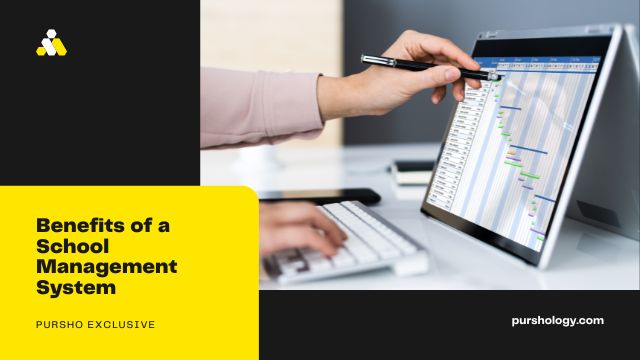
While selecting a school management system, there are many factors to consider. Read this article to learn more about the cost, features, and usability of the various school management systems available. Also, keep in mind that school management software development is a complex process. Developing a successful system takes time and a strong team. To get the most out of it, you must make sure that you can afford it. Hopefully, this article will help you make the right choice.
Features
A school management system is a great tool to use in schools. Not only does it make data management easier, but it can also be used to communicate with parents and staff. It can also be used for various administrative tasks, such as student information, fee management, and schedule and grade keeping. Most schools already have this type of software. But it is possible to find many other uses for a school management system. Here are some examples of the main features you should look for in one.
A good school management system should come with robust tracking tools. It should allow teachers to manage their classes, manage the timetable, and even use online lesson planning. The timetable management module can also help schools keep track of attendance and maintain a list of students who require particular attendance. It should also come with human resource management features, such as managing staff records and handling data pertaining to students and parents. Depending on the type of school you have, a school management system may have features that are specifically helpful.
Costs
A school management system improves efficiency. With automated processes, teachers can focus on teaching skills and students can stay connected all the time. The process of managing an educational institution will be easier and fewer staff will be needed, resulting in lower operating costs. Paper-based processes will be eliminated, as are expenses for energy, paper, and printing. An integrated system can improve communications between teachers and parents. Ultimately, a school management system will improve the performance of all stakeholders.
Software is expensive. Many vendors offer a yearly or monthly subscription fee. Depending on the features and functionality, you could pay as little as $1.2 per student. Purchasing software for your school requires careful consideration. While some school management systems are free, others require a one-time payment of $12,000 or more. If you don’t plan to use the system for more than a few years, be sure to get a free trial before you make a decision.
Usage
The usage of school management system enables schools to effectively manage their resources. The system helps schools to measure student progress, attendance, grades, and curriculum. This data can be easily accessed, and it is also useful for monitoring staff performance and limiting redundant administrative tasks. It can also serve as a central hub for information sharing among education stakeholders, including parents and students. These benefits make it vital for schools to utilize school management systems.
In addition, this type of software helps schools manage their accounts, inventory, and employee data. Using the software, administration can easily manage users and add, edit, and remove data. It also manages fees and installments. The system also provides students with real-time notification of due dates. It can be used to manage student information, such as attendance. It also helps administrators track student progress and improve the quality of education. There are many other benefits of using school management software.
Cost-effectiveness
School management software has many benefits. Using this software allows schools to optimize their resources and improve decision-making. In addition to improving the efficiency of your school’s operations, it can reduce labor costs. With a school management system, you can keep track of everything from classroom timetables to lab activities and reduce manual labor. These features also help to maintain compliance with uniform user policies. Consequently, school management software is an excellent investment for any school.
The cost-effectiveness of interventions has to be measured against its alternative. All alternatives require specific ingredients that must be available for replication. Generally, these ingredients are personnel, facilities, materials, equipment, and client time. This information is collected through interviews, reports, and direct observations. The costs of interventions are then compared using a standard set of criteria. These methods are often more rigorous than those used to measure outcomes.
Benefits
A school management system is beneficial for a number of reasons. It makes the lives of both teachers and administrators much easier. Teachers can focus more time on teaching their students and parents can monitor the progress of their children. Using a school management system also improves communication between students and parents. It automates the tracking of student performance and helps teachers keep track of assignments and feedback. And because of its ease of use, school managers can monitor all these activities and find better solutions more quickly.
Another important benefit of a school management system is that it saves time. With a school management system, administrators no longer have to manually enter data on registers and excel sheets. All data is stored in a simple and easy-to-understand structure. It also allows them to collaborate with the teachers and students more effectively. Furthermore, using a school management system will improve the environment of the school, creating a more welcoming and efficient environment.




